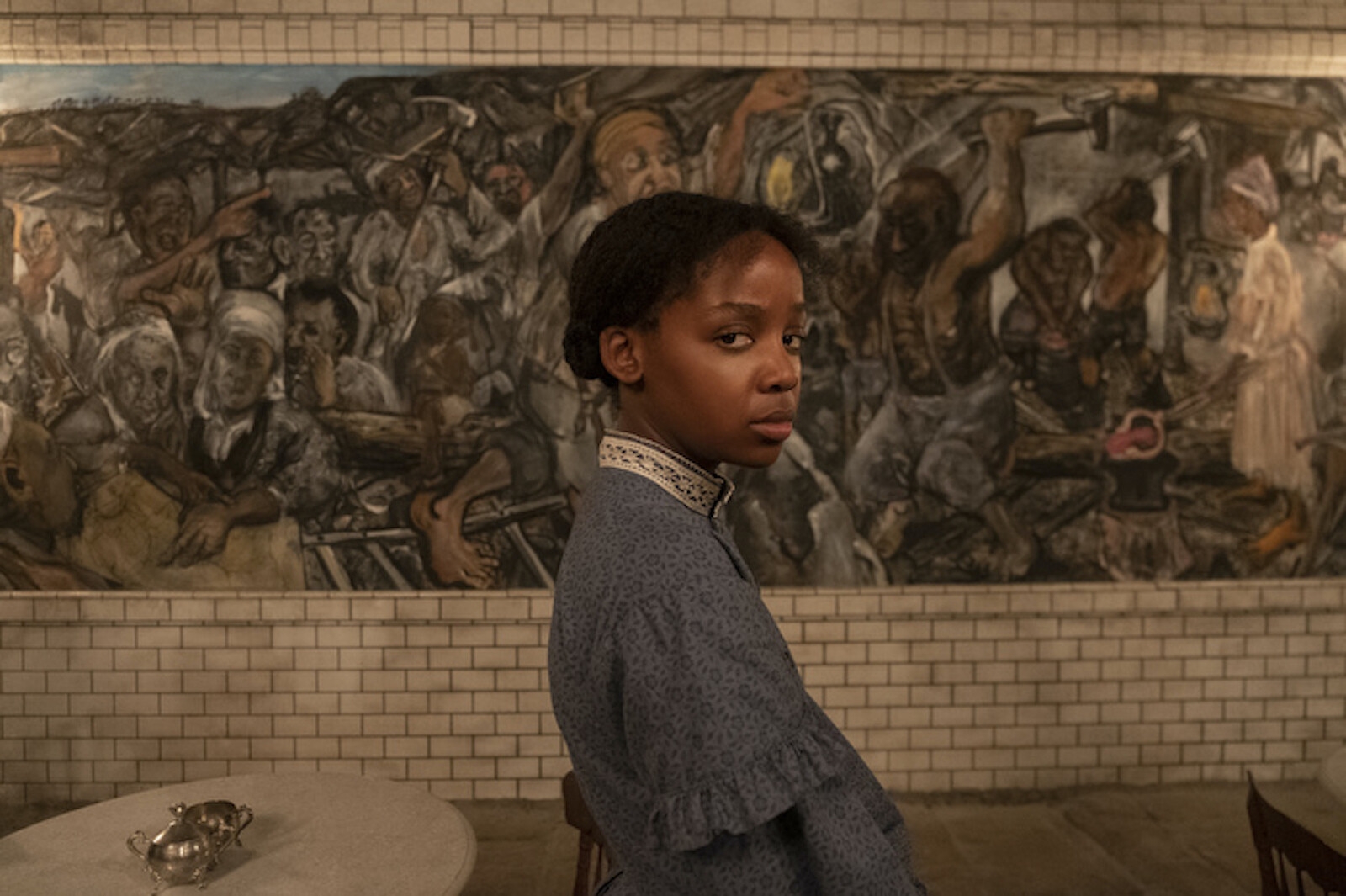
Barry Jenkins is the most intriguing filmmaker working today, having directed back-to-back art masterpieces in “Moonlight” (2016) and “If Beale Street Could Talk” (2018).
Now, Jenkins directs the 10-episode miniseries “The Underground Railroad,” which drops on Amazon Prime Video this Friday. Judging by the first two episodes, we’re in for a powerful ride by a master conductor chugging down the tracks of cinema history.
Based on the 2016 Pulitzer Prize-winning novel by Colson Whitehead, the story follows a Black slave named Cora (a.k.a. Bessie), who attempts to flee bondage in Georgia. While the Underground Railroad historically described a network of hidden routes mapped by abolitionists to free slaves, the show reimagines it as an actual railroad.
Viewers should fully understand going in that this isn’t a straightforward inspirational narrative like Cynthia Erivo’s Harriet Tubman in “Harriet” (2019). Rather, it combines the harrowing history of “Roots” (1977) with the social commentary of “Watchmen” (2019) and even hints of magical realism like “The Polar Express” (2004). Wild, right?
Our empathetic vessel is actress Thuso Mbedu (MTV’s “Shuga”), who was born in Apartheid South Africa in 1991. Our heart aches as she is yanked from her home screaming, “I was born in this room! My momma was born in this room!” As she yells, “No, no,” her cadence recalls Billy Bibbit in “One Flew Over the Cuckoo’s Nest” (1975).
Rounding out the cast is Aaron Pierre (“Old”) as fellow runaway slave Caesar; William Jackson Harper (“The Good Place”) as love interest Royal; Joel Edgerton (“Loving”) as sinister slave-catcher Ridgeway; and child star Chase Dillon (“That Damn Michael Che”) as precocious henchman Homer, lifting his pinky to sip tea like a tiny Uncle Tom.
This adult-child pairing is a refreshing villain combo after decades of evil plantation owners as the foil. Besides, it’s impossible for Edgerton to top Michael Fassbender leaning on slaves’ heads like fence posts in “12 Years a Slave” (2013) or Leonardo DiCaprio wiping his bloody hand on a slave’s face in “Django: Unchained” (2012).
Of course, brace yourself for the type of brutal images we saw in “Roots” (1977) and “12 Years a Slave” (2013) as Jenkins shows the whip-torn flesh of Black bodies strung out in the public square for all to see. There’s a reason Amazon includes the warning: “This episode contains scenes displaying graphic violence. Viewer discretion is advised.”
Thankfully, Jenkins is artful about it, opening with a lyrical shot of slaves falling down a well like the “Sunken Place,” which from a different angle looks like light at the end of a tunnel. This intro also shows a bloody mother burying her placenta, a slave running across a field in reverse slow-mo, and a loving mother backlit by heavenly sunlight.
Cinematographer James Laxton (“Moonlight”) helps Jenkins transcend mere “pretty” compositions. The glowing sun causes a slave holder to fall to the ground ill, visually suggesting divine intervention to “let my people go.” Indeed, so much can be communicated on a visual level if viewers learn to look, really look, at an image.
Most powerful is the aforementioned scene of Cora yanked from her home. Jenkins’ camera dollies backward out of the doorway and pauses over a villain’s dominant shoulder for a long take, before dollying back inside to watch fellow slaves scrub her blood off the floor, the sound of their rags reaching fever pitch across the floorboards.
Jenkins once told WTOP his filmmaking motto: “Walk them loud in the characters’ shoes,” using every ounce of visual and audial aesthetics to bring the audience into the character’s emotional state. That includes composer Nicholas Britell’s haunting violins, capped by Outkast’s intentionally anachronistic “B.O.B.” lyric: “You can’t stop the train.”
It’s here in the closing line of Episode 1 (“Georgia”) that Jenkins articulates the audience’s mission: “If you want to see what this nation is all about, you’ve gotta ride the rails. Look outside as you speed through and you’ll see the true face of America.”
That face is revealed in Episode 2 (“South Carolina”) as Cora and Caesar appear to be living a free life among white folks who claim to be “different.” However, these doctors and teachers are subversively oppressive, namely a museum curator who tells Cora, “Channel that African spirit! Show them what it was really like. For us, by us. FUBU!”
The entire theme of Episode 2 boils down to Caesar’s lament: “A n***er must not prosper unless he prosper in the white man’s vision of him.” Not only does this apply to the characters, it applies to modern politics, sports and entertainment where white gatekeepers at the Oscars, Emmys and Grammys expect assimilated conformity.
What will future episodes symbolically reveal about America as the train chugs further north? I can’t wait to see the remaining eight chapters in what should be one of the most competitive Emmy races for Best Limited Series against “The Queen’s Gambit,” “Small Axe” and “WandaVision,” each of which would deserve to win in any other year.
All aboard the polar express, as in the polar opposite of other superficial television. Jenkins is creating something deeper in a way that only his singular vision can.
Hear my chat with Barry Jenkins on our new podcast “Beyond the Fame.”








